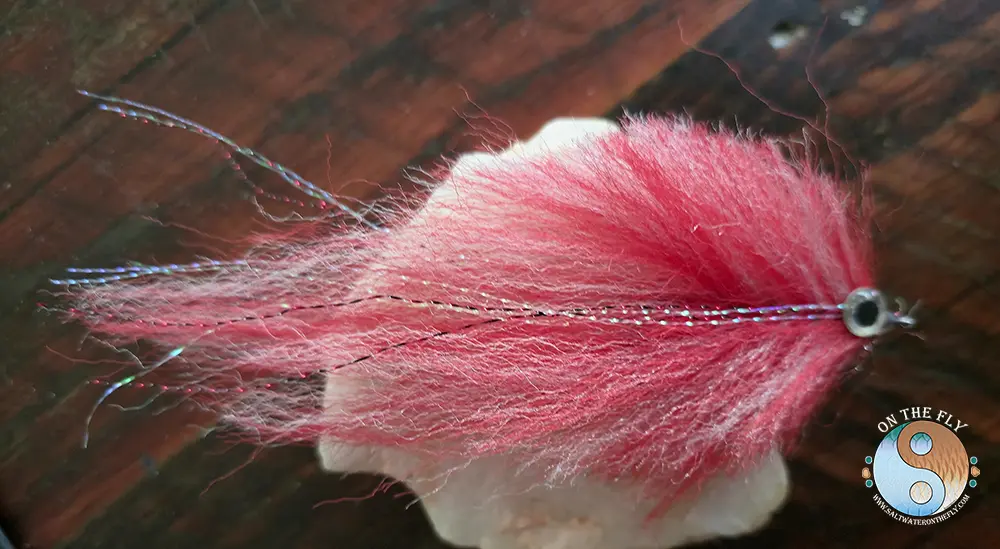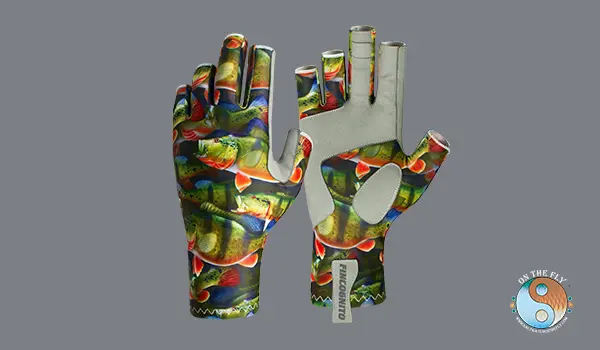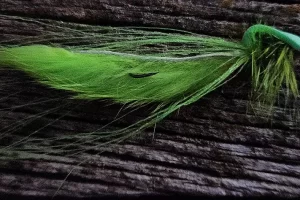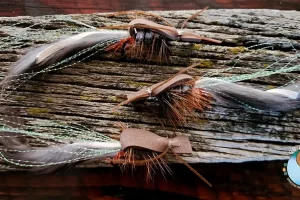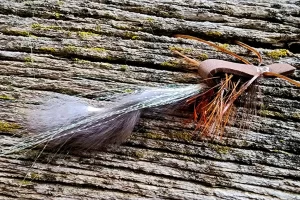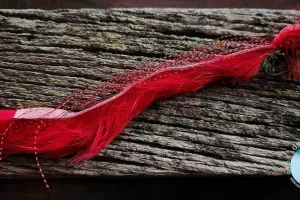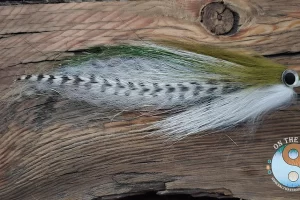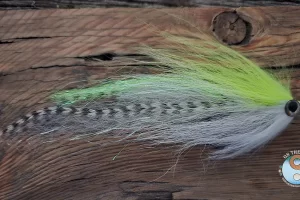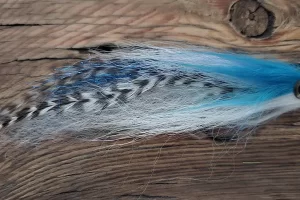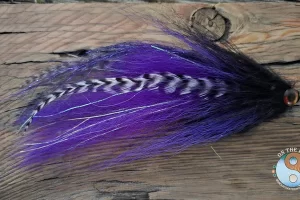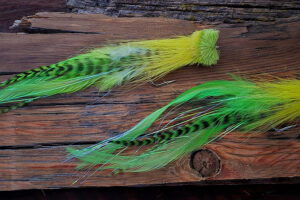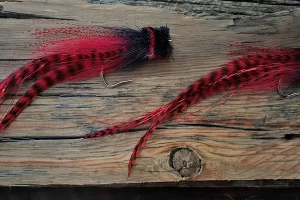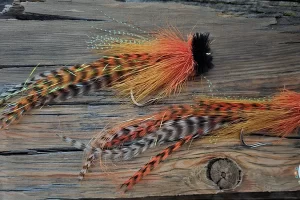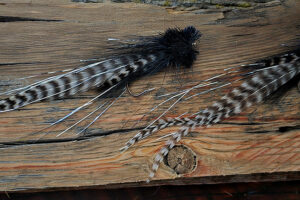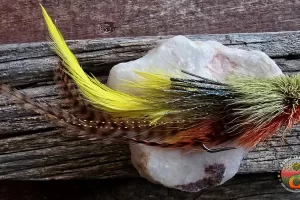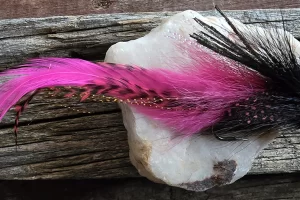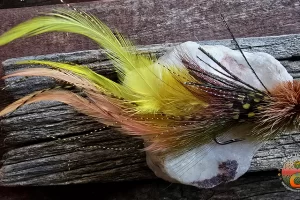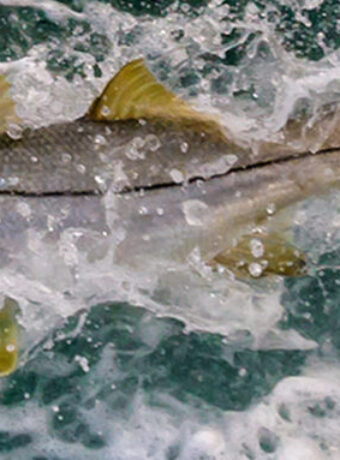Guide to Fly Fish Muskie in Pennsylvania
Pennsylvania is a fly fishing haven, especially for anglers seeking the thrill Fly Fish muskie in Pennsylvania. This article covers everything you need for a successful Pennsylvania muskie fishing experience, from choosing the right gear to understanding muskie behavior.
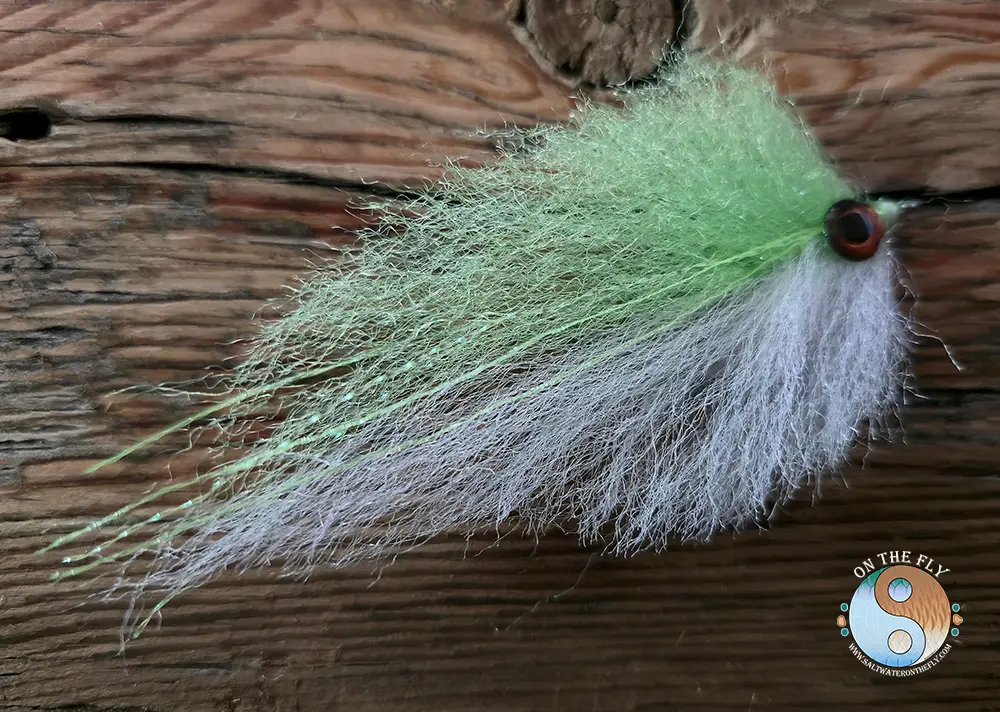
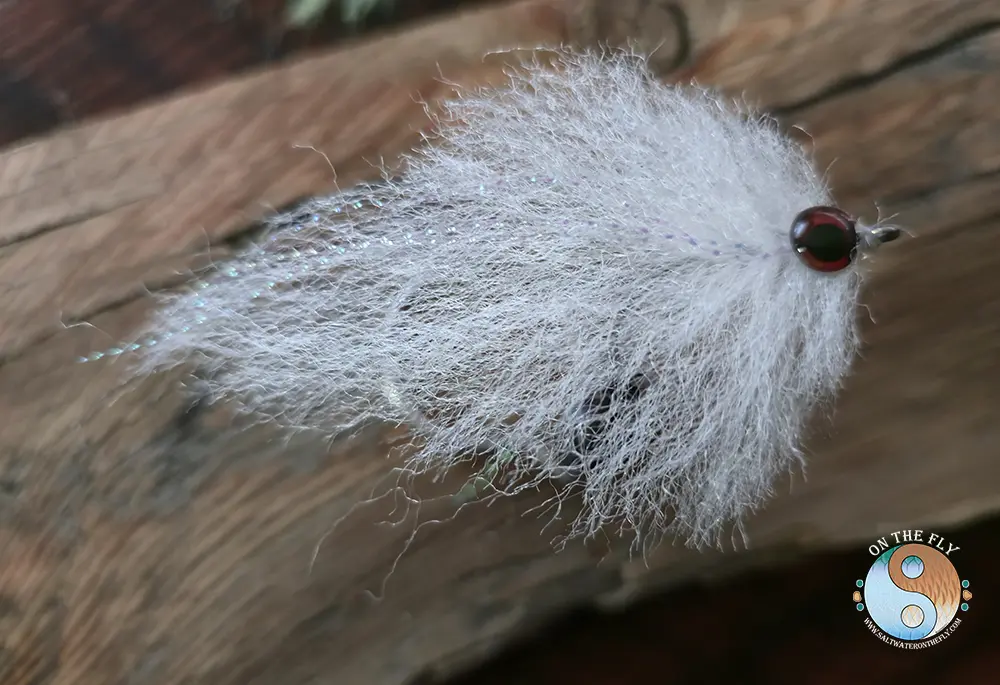
Pelagic Forger Minnows are great Musky & Pike Flies, as well as great saltwater predator flies. Take a look at the selection of Pelagic Forger Minnows.
Table of Contents
Prime Locations to Fly Fish Muskie in Pennsylvania
Pennsylvania boasts numerous muskie hotspots ideal for fly fishing. Here are a few prime locations:
Lake Erie
Known for its monster muskie, Lake Erie offers excellent fly fishing from June to October. The rocky shorelines and weed beds provide ideal habitat for these freshwater fish. Lake Erie is a top choice, according to the Pennsylvania Fish and Boat Commission.
Effective flies here include streamers like the Clouser Minnow and Bunny Streamer. Topwater flies like the Buford’s or Gurglers are also effective. Target the shallow water areas, particularly during early spring.
Youghiogheny River Lake
From May to September, Youghiogheny River Lake is another excellent option for Pennsylvania anglers. Focus on rocky structures where muskie ambush their prey. Streamers like the Muddler Minnow or Zoo Cougar are productive choices.
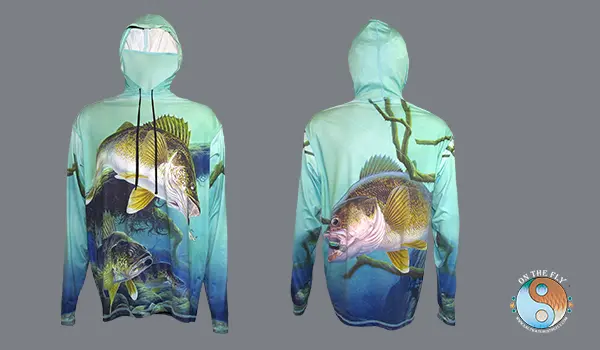
Walleye Graphic Hoodie, Fly Fish Lake Erie for Walleye
Graphic Outdoor Apparel designed fishing, fly fishing, hiking, just about any outdoor activity. All are a UPF-50 sun protection and Graphic Hoodies have a sewn in facemask.
Allegheny River
This river offers fast currents and rocky structures, perfect for fly fishing for muskie. The Allegheny River is known for its muskie fishing opportunities, and streamers are useful when exploring its waters.
Effective streamers include the Slumpbuster or Deceiver. Nymphs such as the Gold-Ribbed Hare’s Ear or the Caddis Larva can also be productive. The best time to fish this waterway is June through October.
Conneaut Lake
Conneaut Lake is a hidden gem for muskie fly fishing in Northwest Pennsylvania. This lake boasts clear waters and plenty of food for muskie. It’s a fantastic spot if you’re looking for a quieter fishing experience. The best time to visit is from June to October. This is when the muskie are most active.
Experienced anglers love Conneaut Lake. They often talk about its clear waters and the many muskie that live there. Look for areas with thick vegetation. Muskie love to hide in lily pads and milfoil. These areas offer the perfect ambush spots. This makes for exciting fly fishing.
Fly selection is key for success. Because Conneaut Lake has such clear water, your fly needs to look natural. Some great choices include:
- Streamers: The Bunny Streamer or the J-7 Streamer work well. These mimic baitfish that muskie love to eat.
- Topwater Flies: If you want some surface action, try a Spook or a Popper. These create a commotion that can draw muskie from deeper water.
Remember to check the local fishing regulations. Also, make sure you have any needed permits before you go. Conneaut Lake is a great place to chase your muskie fly fishing dreams in Pennsylvania. But always be prepared and follow the rules.
Musky J-7 Streamer Tying Instructions
Materials
- Hooks: Two size 2/0 or 3/0 streamer hooks ( Partridge Sea Prince). The front hook will be the main hook; the rear will articulate.
- Thread: Strong 3/0 or 210 denier (Semperfli 3/0 & 6/0, black or color to match).
- Tail: Bucktail (white or chartreuse) + 6-8 strands of Flashabou (silver or gold).
- Body:
- Rear Section: Schlappen feathers (black or olive) + Krystal Flash.
- Front Section: Deer belly hair (white or chartreuse), stacked and spun.
- Articulation: 40-50 lb braided fishing line or wire (e.g., Beadalon) + 6mm beads (2-3, black or metallic).
- Eyes: 3D eyes (8-10mm, yellow or red with black pupil).
- Head: EP Fibers or SF Blend (color to match body, e.g., white/chartreuse mix) + optional UV resin to secure.
- Wire Leader: 6-inch piece of 30-40 lb single-strand wire (e.g., Malin) for the loop-to-hook connection.
Tools
- Vise, scissors, bobbin, whip finisher, hair stacker, bodkin, lighter (for melting line ends).
Steps
- Set Up the Rear Hook
- Secure the rear 2/0 hook in the vise, point down. Start your thread at the bend and wrap forward to just behind the eye.
- Tie in a 3-inch clump of bucktail (e.g., white) at the bend, extending past the hook. Add 6-8 strands of Flashabou (twice the bucktail length) on top for sparkle. Trim excess and secure with tight wraps.
- Add Schlappen and Flash
- Tie in a long schlappen feather (black or olive) by the tip at the base of the tail. Add 4-6 strands of Krystal Flash on each side. Palmer the feather forward 4-5 turns, stroking fibers back as you go, and tie off just behind the eye.
- Whip finish and trim the thread. Remove the hook from the vise for now.
- Articulate the Hooks
- Take your front 2/0 hook and secure it in the vise. Cut a 4-inch piece of braided line or wire. Double it over to form a loop, then melt the ends together with a lighter to prevent fraying (if using line).
- Thread 2-3 beads onto the loop. Pass the loop through the eye of the rear hook, then back through the beads, creating a snug articulated joint. Tie the loop onto the shank of the front hook at the bend, wrapping thread tightly over it and securing with a drop of super glue.
- Build the Front Body
- Restart your thread on the front hook at the articulation point. Tie in another schlappen feather and palmer it forward halfway up the shank for bulk and movement.
- Stack a 2-inch clump of deer belly hair (e.g., chartreuse) in a hair stacker. Spin it around the shank just ahead of the schlappen, flaring it out 360 degrees. Trim to a tapered shape and repeat with a second clump if you want more volume.
- Add Eyes and Head
- Move the thread forward to just behind the hook eye. Tie in EP Fibers or SF Blend (e.g., white/chartreuse mix) around the shank, building a bulky head that pushes water. Keep it dense but flared back toward the body.
- Secure 3D eyes on each side of the head with super glue, then wrap over the bases with thread to lock them in. Add a thin layer of UV resin over the head and cure it for durability (optional).
- Finish the Fly
- Whip finish at the hook eye. Attach a 6-inch wire leader to the front hook eye with a loop-to-loop connection (e.g., a perfection loop on the wire).
- Trim any stray fibers and check the articulation—both sections should wiggle freely but stay aligned.
Final Fly Specs
- Length: ~7-8 inches (hence the “J-7” nod).
- Profile: Wide and bushy, with a lively tail and pulsing front section.
Sink Rate: Fishes well with an intermediate or sinking line; add a weighted conehead (optional) if you need it deeper
Briar Creek Lake
Briar Creek Lake, nestled in Columbia County, is a fantastic spot for fly fishing muskie. It’s known for muskie in the 30- to 40-inch range. This lake offers a thrilling challenge for anglers seeking these elusive predators.
The best time to chase muskie at Briar Creek Lake is from June to October. The water warms up, and the muskie become more active. This makes them more likely to strike your fly.
Thick vegetation is where you should focus your efforts. Muskie love to ambush their prey from the cover of lily pads and milfoil. These areas provide the perfect hiding spots for these stealthy hunters.
Choosing the right flies is key to success. Here are a few proven patterns:
- Streamers: These mimic baitfish and can trigger aggressive strikes. The Bunny Streamer, Secrets, Bunny Clouser Minnows are excellent choices. And a favorite of mine are Pelagic Forger Minnows, great swinging and swing action.
- Topwater Flies: These create a commotion on the surface, attracting muskie from below. Try a Gurgler, Spook or the Popper when the muskie are feeding near the surface.
Remember, muskie fishing requires patience and persistence. These fish are known as the “fish of ten thousand casts” for a reason. But landing one on a fly rod is an incredibly rewarding experience. It’s a testament to your skill and dedication. So, grab your fly rod, tie on your favorite muskie fly fishing pattern, and get ready for an unforgettable adventure at Briar Creek Lake.
Gurglers
- Chartreuse Rabbit Gurgler for Musky Top Water Action
- Mousey Gurgler without stinger hook
- Mousey Gurgler with Stinger Hook
- Red Gurgler
Secrets
- Olive White Secret
- Chartreuse White Secret
- Blue White Secret
- Black Purple Secret
Virgin Run Lake
Virgin Run Lake, nestled in Somerset County, Pennsylvania, offers another great spot to chase muskie on the fly. This lake holds muskie in the 30- to 40-inch range. It’s a beautiful spot to spend a day, even if the fish aren’t biting. The shoreline is rocky in places, perfect for muskie looking for an ambush spot. Weedy areas also provide cover for these predators. These fish like to hide and surprise their prey. This makes for some exciting fly fishing action.
The best time to fish Virgin Run Lake for muskie is from June through October. The water is warmer then, and the muskie are more active. Although streamers are always a good choice, don’t be afraid to mix it up. Topwater flies can also be super effective. Try a Frog or Mouse pattern. These imitate the small creatures muskie love to eat. This is especially true during the warmer months when these critters are more prevalent. You might be surprised by the explosive strikes you get!
Remember, when fly fishing for muskie, a heavy-duty fly rod is important. A 9- or 10-weight rod will give you the backbone you need. You’ll need that strength to cast large flies. You’ll also need it to fight these powerful fish. A sturdy reel with a strong drag system is also a must. Muskie are known for their hard runs and acrobatic fights. You want to make sure your gear is up to the challenge. This will also help prevent break-offs and lost fish.
Youghiogheny River Lake Muskie Fly Fishing
Fly fishing for muskie on the Youghiogheny River Lake—often referred to as Youghiogheny Reservoir—can be an exciting challenge. This large impoundment straddles the Pennsylvania-Maryland state line and is known for a variety of fish species, including muskie. While the Youghiogheny River itself is more famous for its trout fishery, particularly in the tailwater sections below the dam, the reservoir offers a different opportunity for anglers targeting warm-water predators like muskie on a Buford. Here’s a breakdown of the best flies and locations to help you get started.
Best Flies for Muskie
Muskie are apex predators, often called the “fish of 10,000 casts” due to their elusive nature. They require large, attention-grabbing flies that mimic their prey—think baitfish, smaller game fish, or even small mammals. Based on general muskie fly fishing wisdom and what works in similar warm-water environments, here are some top fly recommendations:
-
- Double Buford: A big, articulated streamer with a wide profile, typically 8-10 inches long. Colors like white, black, or chartreuse work well to provoke reaction strikes. The double hooks increase your odds of a solid hookup.
- Tandem Baitfish: Another articulated pattern, usually tied in natural tones (olive, brown, or gray) or brighter combos (orange and chartreuse). These flies imitate the reservoir’s forage fish like shiners or perch.
- Musky Bandit: A bulky fly with a hefty head to push water, often in chartreuse and black. It’s great for murky conditions, helping muskies locate it by sight and vibration.
- Bullethead Baitfish: A simpler, single-hook pattern that’s easier to cast but still effective at 6-8 inches. Go for flashy colors like chartreuse/orange to stand out.
- Big Streamers with Flash: Patterns like the Warpath Jig Fly (black and gold) or oversized Woolly Buggers with added flashabou can tempt a muskie into striking. Aim for flies that move a lot of water and create commotion.
For gear, you’ll want a 9- or 10-weight fly rod with a strong intermediate or sinking line to get these hefty flies down to where muskies lurk. Pair it with a stout leader (0X or heavier, often with a wire tippet) to handle their sharp teeth. Vary your retrieve—slow strips to fast bursts—since muskies can be picky about presentation.
Best Locations on Youghiogheny River Lake
The Youghiogheny Reservoir spans about 16 miles and covers 2,800 acres, offering plenty of ground to explore. Muskie tend to hang out near structure, drop-offs, and weed beds where they can ambush prey. Here are some prime spots to target:
- Near the Dam (Tailrace Area): Just above the dam in the reservoir, the deeper waters can hold muskies, especially where the current begins to slow. Fish the transition zones where the lake narrows, as baitfish often congregate here.
- Submerged Structure Along the Banks: The reservoir has sunken logs, stumps, and rocky points along its shoreline, particularly on the Pennsylvania side. Cast to these areas, focusing on spots with visible cover or sudden depth changes.
- Weed Beds: Look for patches of submerged vegetation, especially in the shallower bays like Jockey Hollow or Mill Run. Muskies use these as hunting grounds, and early morning or late evening casts here can pay off.
- Drop-Offs and Channels: The old river channel runs through the lake, creating deeper trenches. Use a map or fish finder to locate these, then work your flies along the edges where muskies patrol.
- Inflow Areas: The upper end of the lake, where the Youghiogheny River feeds in near Friendsville, Maryland, can attract muskies chasing baitfish carried by the current. This is a good spot in spring or after heavy rain.
Timing matters too. Fall (September to November) is prime muskie season as they feed heavily before winter, but you can also find them in summer when water warms, particularly near cooler inflows. Early mornings and late evenings tend to be most productive, as muskies are more active in low light.
Tips for Success
- Cover Water: Muskies aren’t everywhere, so keep moving and casting to new spots. A boat—whether a drift boat, kayak, or motorized craft—gives you the best access to the lake’s expanse.
- Watch for Follows: Muskies often follow flies without committing. If you see one trailing, switch to a figure-eight retrieve near the boat to trigger a strike.
- Be Patient: Even in a well-stocked lake like Youghiogheny, muskies are sparse and tough to hook. Persistence is key.
The Youghiogheny Reservoir isn’t as renowned for muskie as some Great Lakes tributaries or northern pike waters, but it does support a population thanks to Pennsylvania Fish and Boat Commission stocking efforts. Pair the right flies with strategic location scouting, and you’ve got a solid shot at landing one of these toothy beasts. Good luck out there!
Buford Flies
- Chartreuse Yellow Buford Muskie Fly
- Black Red Buford Muskie Fly
- Orange Black Buford Musky Fly
- Black Buford Musky Fly
- A great Musky Seducer a Buford
Fly Fish Muskie in Pennsylvania: Gear and Techniques
The proper gear and techniques greatly increase your success when fly fishing for muskie. A standard fly fishing setup won’t suffice when pursuing this powerful predator. Consider bringing white suckers as bait to enhance your fishing experience.
Essential Gear
A 9 or 10-weight fly rod is recommended with a strong reel and a weight-forward floating fly line. This setup helps cast large flies and manage these strong fish. A heavy leader (40-80lb test) with a wire bite tippet is essential.
A landing net simplifies releasing the fish. These big water fish can put up a tough fight.
Fly Selection
Large streamers that imitate baitfish or other prey are effective muskie flies. These large flies trigger aggressive strikes. Topwater flies can also entice strikes by creating surface disturbance.
Techniques
Casting large flies for muskie requires a powerful, sweeping motion. Retrieve the fly quickly with short strips to mimic the movement of prey. This triggers the muskie’s predatory instincts, increasing the chance of a strike.
Understanding Muskie Behavior
Muskie are ambush predators, notorious for their elusiveness. They often lurk in areas with cover to surprise their prey. Look for rocky structures, weed beds, drop-offs, and submerged logs. Remember that the 2022 statewide fishing regulations have impacted how we fish for them.
Pay attention to these promising spots when you fly fish muskie in Pennsylvania. Focusing on such locations improves your chances of success.
Regulations and Conservation
Muskie fishing in Pennsylvania is regulated. All muskie fishing in certain waters is catch and release only. Make sure your Pennsylvania fishing license and permits are valid before you head out.
Check the Pennsylvania Fish and Boat Commission website for up-to-date regulations regarding proper handling and release practices. Consult local fishing reports before planning your trip. Be aware that all sizes of muskie caught from Lake Wilhelm during April and May must be immediately released.
Additional Tips for Success
- Time of Year: Fall offers excellent opportunities as muskies actively feed before winter, with fish often being heavier. Spring, particularly the pre-spawn period, is also a productive time. The muskie season in Pennsylvania is open year-round.
- Time of Day: Early morning and late evening tend to be prime fishing times. Low light levels can significantly impact fishing conditions, and muskies may move into shallower water during these periods.
- Stealth: Approach your fishing spots quietly, as loud noises can spook muskie. Minimizing disturbances in the water increases your chances of a successful catch.
- Patience: Muskie are often called the “fish of 10,000 casts”. Be prepared to invest time and effort in your pursuit. Seasoned anglers understand this aspect of the sport.
- Guides: Consider hiring an experienced guide. They possess invaluable local knowledge of the rivers and their flows and where the pools hold muskie. A guide can significantly enhance your fly fishing experience, especially for beginners. You can refer to fishing reports and consider an AGS guide for an even more exciting experience.
FAQs about Fly Fish Muskie in Pennsylvania
Where to catch muskie in Pennsylvania?
Pennsylvania offers a variety of locations to catch muskie. Some top waters include the Allegheny River, Lake Erie, Pymatuning Reservoir, and Lake Wilhelm. The Youghiogheny River Lake, Raystown Lake, the Susquehanna River’s north branch, and the Ohio River are also home to healthy muskie populations. Easily accessible areas like Codorus State Park on Lake Marburg are good for beginners.
Can you fly fish for musky?
Yes, fly fishing for muskie is possible, providing a thrilling challenge. It requires specialized gear, such as heavier rods, strong lines, and large streamers, designed for these predators. Catching a big muskie on the fly is a rewarding experience.
Remember the “Kinzua Giant”, a 53-pound, 14-ounce muskie caught in the Allegheny Reservoir during a biological survey? Stories like this one continue to draw people to fly fish muskie in Pennsylvania. This shows the potential of the reservoir as a big water location with the possibility to produce big fish. There are stories of muskies exceeding the 50-inch range coming from the waters across western Pennsylvania’s numerous river watersheds.
What is the biggest musky caught in PA?
The Pennsylvania state record muskie weighed 54 pounds, 3 ounces, caught from Conneaut Lake in 1924. This record stands as a benchmark for anglers across the state. Anglers dream of breaking this long-standing record.
Some believe it will take an even larger fish from the Allegheny Reservoir to surpass this century-old record. The general rule is bigger bait, bigger fish, but the best bait won’t make up for knowing your locations. Anglers will often see larger muskie in the Allegheny River and some in the 30 to 40-inch class in places like the Monongahela River. However, the middle Allegheny River section often yields the bigger ones.
Is there a muskie season in PA?
Muskie season is open year-round on commonwealth inland waters, though daily limits and size restrictions may apply. All sizes of muskie caught from Lake Wilhelm must be released during April and May. Check the Pennsylvania Fish and Boat Commission website for regulations.
Conclusion of Fly Fish Muskie in Pennsylvania
Fly fishing for muskie in Pennsylvania offers a thrilling adventure and the potential for incredible rewards. Pursuing these elusive predators requires patience, skill, and the right approach. With careful planning, an understanding of muskie behavior, and suitable gear, you can increase your chances of landing an impressive muskie on the fly. Remember, catch and release helps preserve this species for future generations.
Explore the beautiful waters of Pennsylvania and enjoy the challenge of fly fishing for muskie. Resources like PA Cast offer helpful tips. Stay hydrated with purified water using a Gryal 24 Oz Bottle. The AGS Retail store in Oil City, PA provides essential supplies for anglers. Keep exploring rivers, even in the late fall or as water temperatures increase into the summer. It is also recommended to check out local bait shops for more area specific tips when going shore fishing. The Allegheny National Forest surrounds portions of the Allegheny River and Allegheny Reservoir offering a rich landscape for an immersive fishing trip. Don’t overlook other Pennsylvania fish, such as brown trout or smallmouth bass. Trout fishing can be a rewarding activity. Pennsylvania Fish and Boat Commission (PFBC) can assist in planning your fishing trips. For an additional adventure, head north where the PFBC has a stocking program of muskellunge into the North Branch of the Susquehanna River near Tunkhannock to establish a new population.

